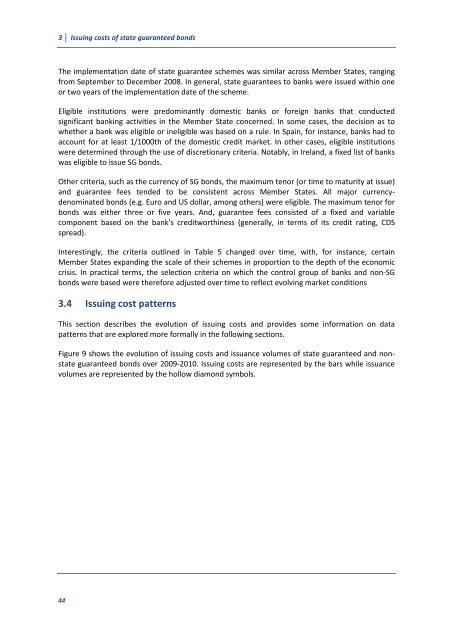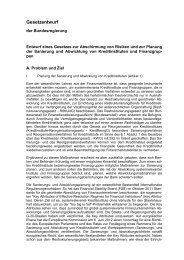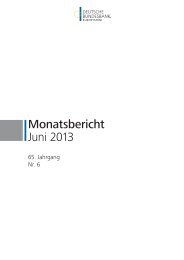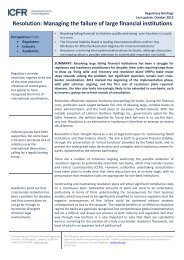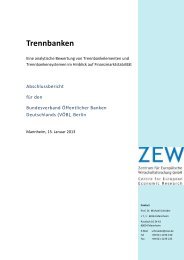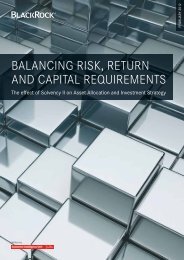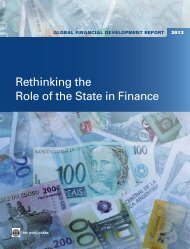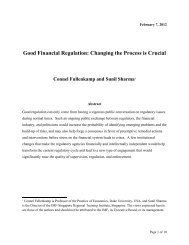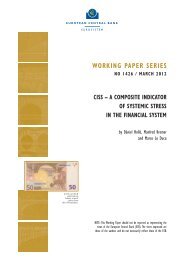3 Issuing costs of state guaranteed bonds - Financial Risk and ...
3 Issuing costs of state guaranteed bonds - Financial Risk and ...
3 Issuing costs of state guaranteed bonds - Financial Risk and ...
Create successful ePaper yourself
Turn your PDF publications into a flip-book with our unique Google optimized e-Paper software.
3 <strong>Issuing</strong> <strong>costs</strong> <strong>of</strong> <strong>state</strong> <strong>guaranteed</strong> <strong>bonds</strong><br />
The implementation date <strong>of</strong> <strong>state</strong> guarantee schemes was similar across Member States, ranging<br />
from September to December 2008. In general, <strong>state</strong> guarantees to banks were issued within one<br />
or two years <strong>of</strong> the implementation date <strong>of</strong> the scheme.<br />
Eligible institutions were predominantly domestic banks or foreign banks that conducted<br />
significant banking activities in the Member State concerned. In some cases, the decision as to<br />
whether a bank was eligible or ineligible was based on a rule. In Spain, for instance, banks had to<br />
account for at least 1/1000th <strong>of</strong> the domestic credit market. In other cases, eligible institutions<br />
were determined through the use <strong>of</strong> discretionary criteria. Notably, in Irel<strong>and</strong>, a fixed list <strong>of</strong> banks<br />
was eligible to issue SG <strong>bonds</strong>.<br />
Other criteria, such as the currency <strong>of</strong> SG <strong>bonds</strong>, the maximum tenor (or time to maturity at issue)<br />
<strong>and</strong> guarantee fees tended to be consistent across Member States. All major currencydenominated<br />
<strong>bonds</strong> (e.g. Euro <strong>and</strong> US dollar, among others) were eligible. The maximum tenor for<br />
<strong>bonds</strong> was either three or five years. And, guarantee fees consisted <strong>of</strong> a fixed <strong>and</strong> variable<br />
component based on the bank's creditworthiness (generally, in terms <strong>of</strong> its credit rating, CDS<br />
spread).<br />
Interestingly, the criteria outlined in Table 5 changed over time, with, for instance, certain<br />
Member States exp<strong>and</strong>ing the scale <strong>of</strong> their schemes in proportion to the depth <strong>of</strong> the economic<br />
crisis. In practical terms, the selection criteria on which the control group <strong>of</strong> banks <strong>and</strong> non-SG<br />
<strong>bonds</strong> were based were therefore adjusted over time to reflect evolving market conditions<br />
3.4 <strong>Issuing</strong> cost patterns<br />
This section describes the evolution <strong>of</strong> issuing <strong>costs</strong> <strong>and</strong> provides some information on data<br />
patterns that are explored more formally in the following sections.<br />
Figure 9 shows the evolution <strong>of</strong> issuing <strong>costs</strong> <strong>and</strong> issuance volumes <strong>of</strong> <strong>state</strong> <strong>guaranteed</strong> <strong>and</strong> non<strong>state</strong><br />
<strong>guaranteed</strong> <strong>bonds</strong> over 2009-2010. <strong>Issuing</strong> <strong>costs</strong> are represented by the bars while issuance<br />
volumes are represented by the hollow diamond symbols.<br />
44


